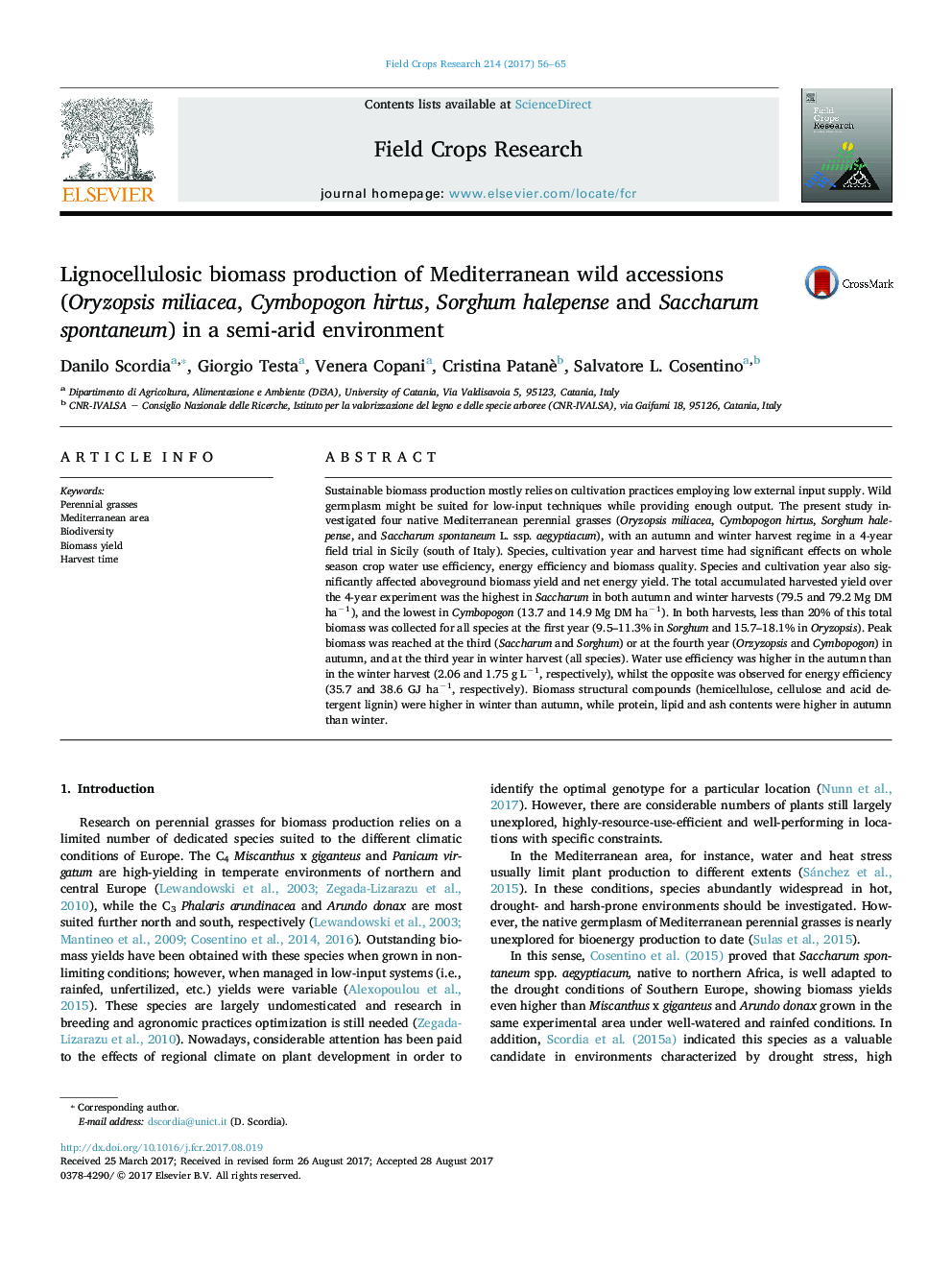| Article ID | Journal | Published Year | Pages | File Type |
|---|---|---|---|---|
| 5761370 | Field Crops Research | 2017 | 10 Pages |
Abstract
Sustainable biomass production mostly relies on cultivation practices employing low external input supply. Wild germplasm might be suited for low-input techniques while providing enough output. The present study investigated four native Mediterranean perennial grasses (Oryzopsis miliacea, Cymbopogon hirtus, Sorghum halepense, and Saccharum spontaneum L. ssp. aegyptiacum), with an autumn and winter harvest regime in a 4-year field trial in Sicily (south of Italy). Species, cultivation year and harvest time had significant effects on whole season crop water use efficiency, energy efficiency and biomass quality. Species and cultivation year also significantly affected aboveground biomass yield and net energy yield. The total accumulated harvested yield over the 4-year experiment was the highest in Saccharum in both autumn and winter harvests (79.5 and 79.2 Mg DM haâ1), and the lowest in Cymbopogon (13.7 and 14.9 Mg DM haâ1). In both harvests, less than 20% of this total biomass was collected for all species at the first year (9.5-11.3% in Sorghum and 15.7-18.1% in Oryzopsis). Peak biomass was reached at the third (Saccharum and Sorghum) or at the fourth year (Orzyzopsis and Cymbopogon) in autumn, and at the third year in winter harvest (all species). Water use efficiency was higher in the autumn than in the winter harvest (2.06 and 1.75 g Lâ1, respectively), whilst the opposite was observed for energy efficiency (35.7 and 38.6 GJ haâ1, respectively). Biomass structural compounds (hemicellulose, cellulose and acid detergent lignin) were higher in winter than autumn, while protein, lipid and ash contents were higher in autumn than winter.
Related Topics
Life Sciences
Agricultural and Biological Sciences
Agronomy and Crop Science
Authors
Danilo Scordia, Giorgio Testa, Venera Copani, Cristina Patanè, Salvatore L. Cosentino,
